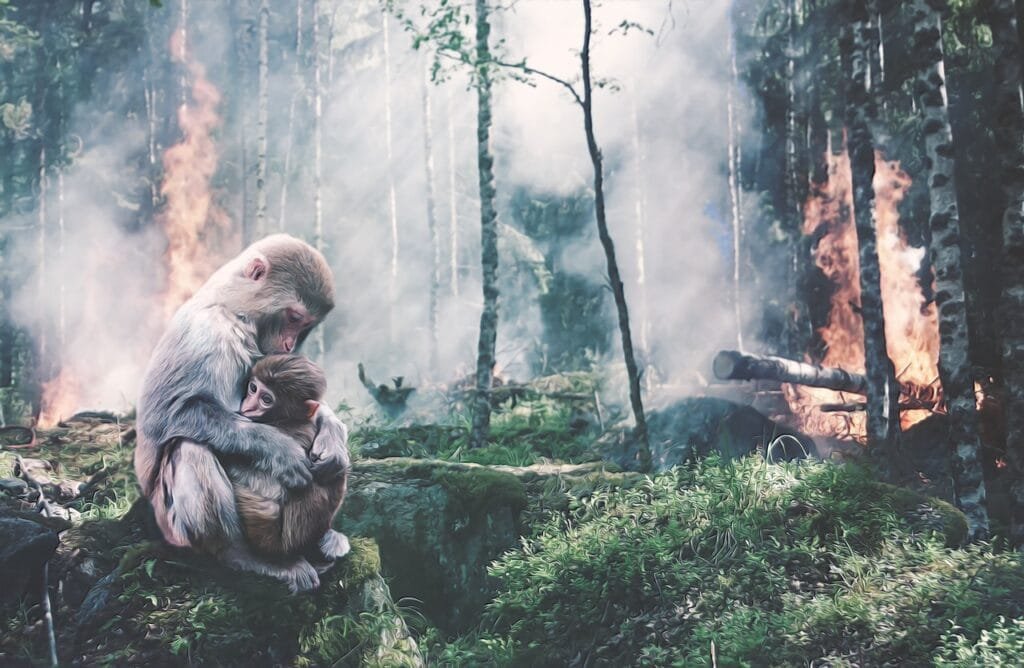Deforestation and Its Impact on Biodiversity
Deforestation, the large-scale clearing of forests for agricultural, industrial, and urban development, poses a significant threat to global biodiversity. Forests are home to approximately 80% of the world’s terrestrial species, including a wide range of plants, animals, fungi, and microorganisms. The destruction of these habitats leads to habitat fragmentation, population declines, and the extinction of species. This report explores the impact of deforestation on biodiversity, highlighting real-world statistics and case studies to illustrate the severity of the issue.
The Scale of Deforestation
According to the Food and Agriculture Organization (FAO) of the United Nations, the world lost approximately 4.7 million hectares of forest per year between 2010 and 2020. Tropical regions are the most affected, with the Amazon rainforest experiencing an alarming rate of deforestation. In 2020 alone, 1.1 million hectares of the Amazon were destroyed, as reported by the World Resources Institute (WRI). Southeast Asia and Central Africa are other significant deforestation hotspots (FAO, 2020; WRI, 2021).
Biodiversity Loss: A Global Perspective
Forests provide critical habitats for many species. When deforestation occurs, the following impacts on biodiversity are observed:
- Loss of Habitat and Species Extinction
Habitat loss due to deforestation is the primary cause of species extinction. According to the International Union for Conservation of Nature (IUCN), nearly 27,000 species are currently threatened with extinction, with deforestation being a key driver. The Amazon rainforest, often referred to as the “lungs of the Earth,” contains about 10% of all known species. It is estimated that 137 species of plants, animals, and insects are lost every day due to deforestation (IUCN, 2021; WWF, 2022). - Fragmentation of Ecosystems
Fragmentation occurs when large forests are divided into smaller patches, disrupting migration and breeding patterns. For example, the orangutan population in Borneo and Sumatra has declined by over 50% in the last 60 years due to palm oil plantation expansion (WRI, 2021). - Decline in Pollinators and Seed Dispersers
Many forest-dependent species, such as bees, bats, and birds, are crucial for pollination and seed dispersal. The decline in these species leads to reduced forest regeneration and affects agricultural yields. The loss of pollinators is estimated to put 75% of global food crops at risk (IPCC, 2021). - Disruption of Food Chains
Apex predators, like tigers and jaguars, suffer from habitat destruction. The global tiger population has decreased by 95% over the past century, with deforestation playing a major role (IUCN, 2021). - Impact on Microbial Diversity
Forest soils contain diverse microbial communities essential for nutrient cycling. Deforestation reduces soil quality and microbial diversity, impacting overall ecosystem health (Science Advances, 2021).
Case Studies
- Amazon Rainforest (Brazil)
The Amazon, covering 5.5 million square kilometers, is the world’s largest rainforest. Deforestation for cattle ranching accounts for 80% of forest loss in Brazil. The 2022 deforestation rate increased by 22% compared to the previous year, with direct consequences for species such as the jaguar (Panthera onca) and the harpy eagle (Harpia harpyja) (WWF, 2022). - Borneo and Sumatra (Indonesia and Malaysia)
Deforestation for palm oil plantations has led to significant biodiversity loss. The population of the Bornean orangutan has decreased by more than 100,000 individuals over the last two decades. Other affected species include the Sumatran tiger and the Asian elephant (WRI, 2021). - Congo Basin (Central Africa)
The Congo rainforest, the second-largest tropical forest, has lost over 1.5 million hectares annually. Forest elephants, crucial for seed dispersal, have declined by over 60% since 2002 (UN-REDD, 2021).
Socioeconomic and Environmental Consequences
Deforestation affects not only wildlife but also human livelihoods and the global climate. Indigenous communities, who rely on forests for food, medicine, and shelter, are often displaced. Furthermore, deforestation contributes to about 10% of global carbon emissions, accelerating climate change (IPCC, 2021).
Efforts to Mitigate Biodiversity Loss
- International Agreements: Initiatives like the Convention on Biological Diversity (CBD) and the Paris Agreement aim to curb deforestation and promote sustainable land use (UNEP, 2021).
- Protected Areas and Conservation Projects: Protected areas now cover approximately 15% of the Earth’s land surface. Programs like REDD+ (Reducing Emissions from Deforestation and Forest Degradation) offer financial incentives for forest conservation (UN-REDD, 2021).
- Corporate Commitments: Many companies have pledged to eliminate deforestation from their supply chains, particularly for commodities like palm oil, soy, and beef (Global Canopy, 2022).
Conclusion
Deforestation has profound and far-reaching consequences on biodiversity, threatening the survival of countless species and the integrity of ecosystems. Addressing this crisis requires a multifaceted approach involving policy reform, community engagement, technological innovation, and global cooperation. Protecting forests is not only essential for preserving biodiversity but also for maintaining a stable and sustainable planet for future generations.
References
- FAO (2020). The State of the World’s Forests. Retrieved from: https://www.fao.org/state-of-forests
- WRI (2021). Global Forest Watch Report. Retrieved from: https://www.globalforestwatch.org
- IUCN (2021). The IUCN Red List of Threatened Species. Retrieved from: https://www.iucnredlist.org
- WWF (2022). Amazon Deforestation and Biodiversity Loss. Retrieved from: https://www.worldwildlife.org
- UNEP (2021). Convention on Biological Diversity. Retrieved from: https://www.cbd.int
- IPCC (2021). Climate Change and Land Report. Retrieved from: https://www.ipcc.ch/srccl
- UN-REDD (2021). REDD+ Program. Retrieved from: https://www.un-redd.org
- Global Canopy (2022). Corporate Deforestation Commitments. Retrieved from: https://www.globalcanopy.org
- Science Advances (2021). Impact of Deforestation on Soil Microbial Diversity. Retrieved from: https://www.science.org/doi/10.1126/sciadv.abd9230

